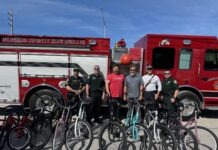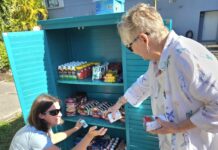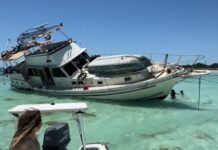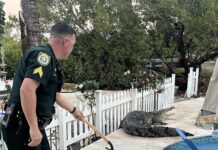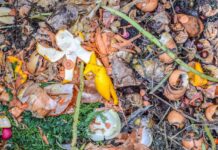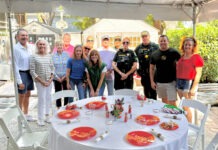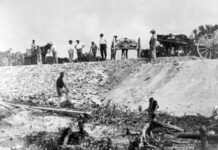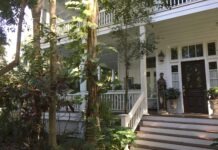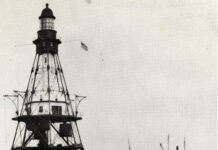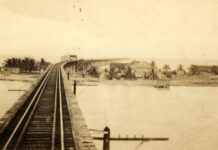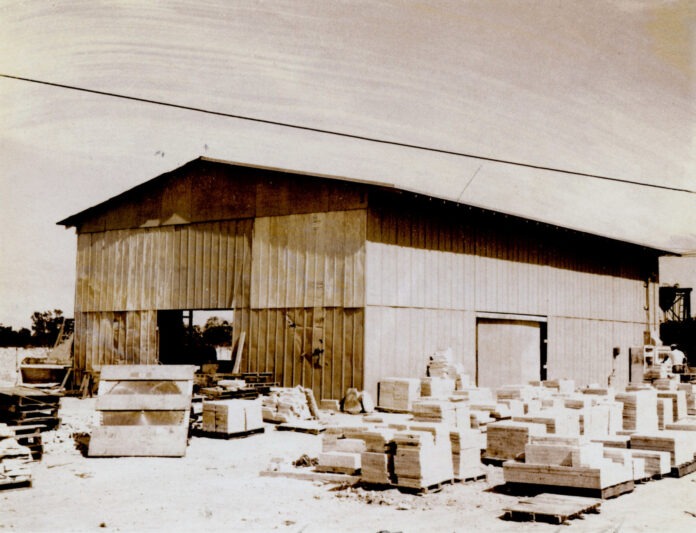
It is no secret that Key West gets most of the shine in the Florida Keys. In everyday talk about the island chain, most conversations center on the Southernmost City. The same can be said about things written in magazine articles and books and told in documentaries. Sometimes, it can feel like Key West is the only island in the Florida Keys, which is one of the reasons I do what I do: there is tremendous history up and down the island chain.
Today, we’ll explore an island that was two islands before Henry Flagler and the men building the Key West Extension of his Florida East Coast Railway arrived. The 1772 DeBrahm chart identified the larger of the two islands as Wright. In 1849, Gerdes wrote in his pamphlet Reconnaissance of the Florida Reef and all the Keys, “Island between Long Id. (an early name for Plantation Key) and Old Matecumbe (Upper Matecumbe) has no name.” In the 1850s, both a U.S. Coast Survey and a report by Captain Abner Doubleday (yes, that Abner Doubleday who didn’t invent baseball) written for the U.S. Army identified the island as Vermont Key.
During the construction of the railroad, the two islands were known as the Umbrella Keys and Windleys Island. Benjamin Russell homesteaded 127 acres of the substantially larger of the two islands in 1883. In 1895, that island’s remaining 97 acres were deeded to the Jackson, Tampa, and Key West Railroad – a precursor to the Florida East Coast Railway. It was Henry Flagler’s men who, while building the Key West Extension of the East Coast Railway, filled the narrow channel separating the two islands with limestone, sand, and marl until the two islands became one.
We recognize the island as Windley Key, a name thought to have come from an early pioneer. It is a relatively small island and home to a single mile marker, 85. Windley Key boasts two prominent physical features: quarries and fossils. It might be the best place in all of the Florida Keys to stop and take a good close look at the Keys’ ancient “underbelly.”
One of the island’s defining features is a collection of rock quarries dating back to the turn of the 20th century. One of those quarries hides in relatively plain sight as the prominent, rectangular water feature where bottlenose dolphins have been performing for audiences at Theater of the Sea since 1946.
In the midst of the Flagler years, a bustling railroad town sprang to life on Windley Key.
It was named, appropriately enough, Quarry and was located in the general area of what is today the parking lot of Theater of the Sea.
On April 8, 1908, the Jacksonville Florida Times-Union printed: “The camp at Quarry on Windley’s or Umbrella Key, is about the liveliest place on the keys. 100 laborers are employed quarrying rock, which is taken down the line and distributed along the trestles and right of way of the ocean going railway, for their protection from tides. Mr. W.E. Brown is the resident engineer, and Capt. Richard and Mr. H.W. Connelly, foreman. The culinary department is looked after by Mr. D. M. Matheson, steward and it is not saying too much in his praise to call it the best camp that ever operated on the line. The men are fed on the best, nicely cooked, plenty of seafood, fresh meat and vegetables in abundance. Laborers come and go when they please, and are well paid. Mr. D.C. McCown is the storekeeper and Mr. E.M. Birchland is the new agent.”
At the quarries, workers sliced through the substrate for a byproduct of an ancient coral reef. Corals are not plants but animals closely related to sea anemones and jellyfish. They also build tiny coral homes by excreting limestone. Over thousands of years, the overlapping development of those limestone houses grow to create massive barrier reef systems. One of those ancient systems of coral reefs is now called the Florida Keys.
It is one thing to say that the island chain was built on the back of an ancient coral reef, but it is another thing to see it firsthand, which makes Windley Key special. The primary quarry sites were located on the other side of the railroad tracks from what is today Theater of the Sea, where operations would continue long after Henry Flagler rolled into Key West aboard his personal railcar on January 22, 1912.
Quarry work, done first by Russell and later by the men building the railroad and those working for the Keystone Rock Company, exposed eight-foot-tall island walls. Within those walls are the fossilized remains of the ancient reef, which is why the old quarry is now home to the Windley Key Fossil Reef Geological State Park.
The last company to quarry the limestone was the Keystone Rock Company. The quarrymen cut away the slabs of limestone that were then shipped to the Miami warehouse where the fossilized stone facades were polished to a sheen and sold as a decorative building material called Keystone. The Florida Keys Memorial, also known as the Hurricane Monument, on Upper Matecumbe Key, is an excellent example of Keystone. Though Keystone is still used, The Keystone Quarry ceased operations in the 1960s.
In addition to some of the machinery once used to cut away the limestone displayed on the park grounds, the exposed walls of the former quarry are still standing. When visiting the park and walking through the old quarry, it is not only amazing to see the beautifully fossilized corals in the walls but also just how cookie-thin the layer of natural humus that covers the Florida Keys can be.
